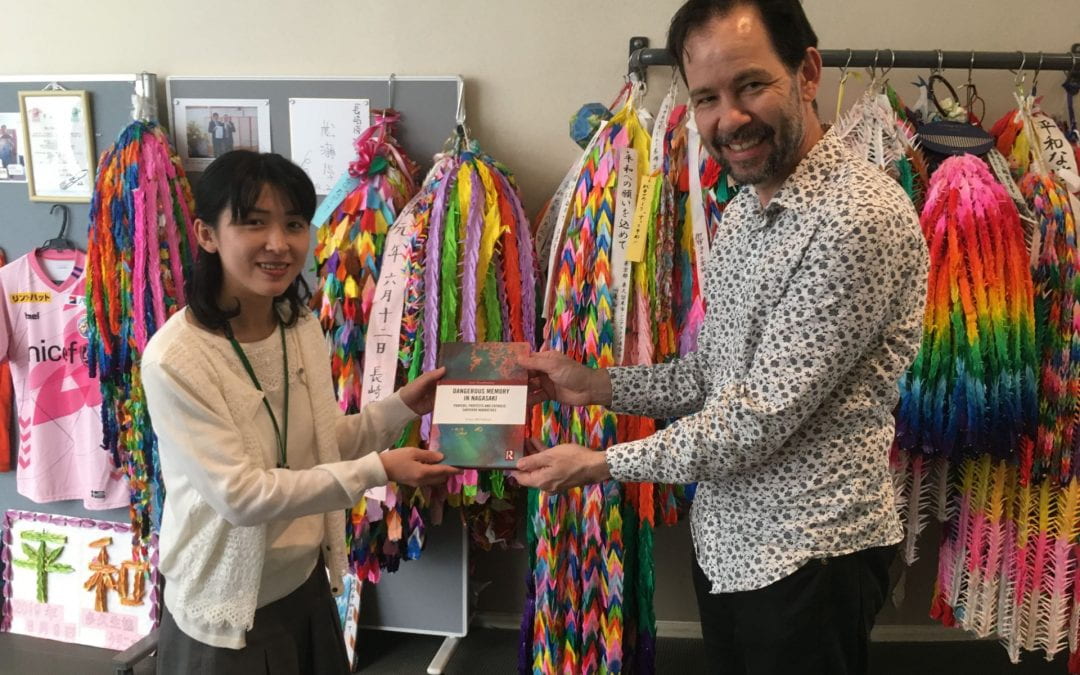One of the great strengths of history study is that it can throw new light on a seemingly well-trodden subject, opening up new questions about the past and its impacts on the present and future.
As a child, UNE Japanese lecturer and historian Dr Gwyn McClelland was introduced to the historical event of the atomic bombing of Hiroshima and Nagasaki through a friend’s manga comic. Today, exploring some lesser-known aspects of this devastating and defining moment shapes his research.
Years after the manga comic introduction, the history of the bombing was further brought to life for Gwyn when he moved to Japan with his own young family.
“We had an opportunity to go to both Hiroshima and Nagasaki. When we entered the atomic bomb museum in Nagasaki, we felt strongly that the two museums were different in emphasis and narrative,” he says.
“Over the past 75 years, a plethora of research about the atomic bombing of Hiroshima has been produced, while Nagasaki has been relatively neglected.”
Gwyn became interested in finding out why it was that the impacts of such a shattering moment for the city of Nagasaki had failed to be comprehensively explored in the existing literature.
He noticed an important difference between the two cities was the large component of Catholic believers in Nagasaki, a community particularly devastated in the bombing.
“Around 70% of the Catholic community around Ground Zero were killed by the atomic bomb, but the Catholic narratives of the bombing have been sidelined, or silenced for a number of reasons,” he says, pointing to both internal and external factors.
“One reason for silence was the fracturing of this minority community at the moment of the bombing – and the lack of survivors prepared to tell their story. The Catholics who did survive the bombing would have found themselves in a situation of double and triple marginalisation after the war – branded as ‘worshippers of an enemy god’, on top of other prejudices,” Gwyn says.
Gwyn says the destruction of this community also wouldn’t have presented such a neat narrative for the American people.
“The fact that they bombed the largest community of Catholics in Japan is an embarrassment for the United States, who would perhaps rather forget this fact.”
While the bombing occurred 75 years ago, the effects are still keenly felt today. And, in a world where the threat of nuclear warfare looms, understanding the impacts of the world’s first atomic bombs is still just as relevant today.
“The ‘hibakusha’ – those who suffered from the bombing in Hiroshima and Nagasaki – are still deeply concerned by the threat of nuclear warfare which atomic scientists warn we are very close to realising. Meanwhile, as a global community, we’re only six nations away from the ratification at the United Nations of a nuclear weapons treaty banning the bomb – so it continues to be very important, very political and very topical.”
Meanwhile, Gwyn’s research stands as an important reminder of the diversity in the stories and experiences of those whose lives were changed in an instant.
“I think contributing to a better understanding of the narrative and experiences around the atomic bombing of Nagasaki, especially within the Catholic community, is really important for bringing to light histories of marginalisation and the complex and long-lasting results of atomic warfare.”
** Dr Gwyn McClelland hopes to be able to take up a fellowship offered by the Japan Foundation to travel to the Goto Archipelago near Nagasaki city in the near future to continue his research, once COVID-19 restrictions ease. **
Image: Dr Gwyn McClelland ‘returning’ the stories from Nagasaki in 2019.



Recent Comments